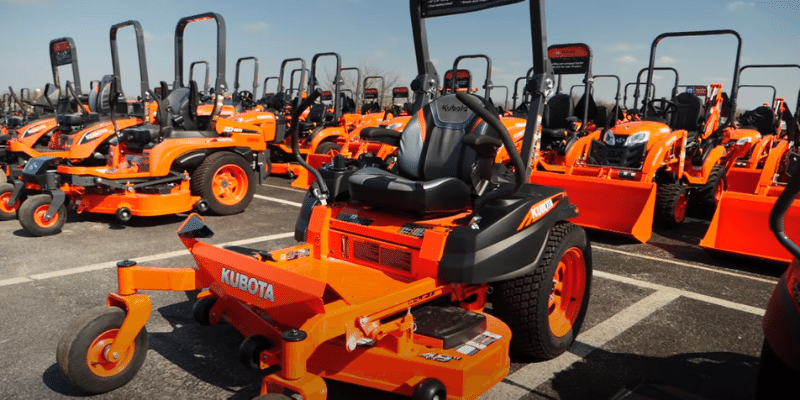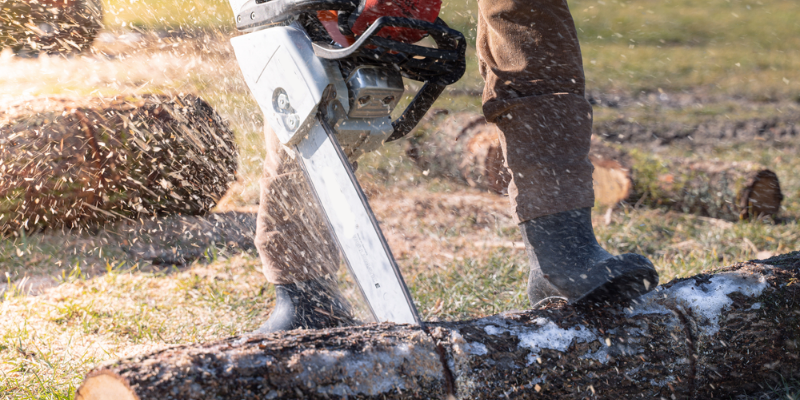How To Fix Kubota’s Hydrostatic Transmission Problems?
Kubota is a multinational corporation that is founded in Osaka, Japan. Tractors and other agricultural gear, construction equipment, engines, and equipment for water purification, sewage treatment, and air conditioning are some of the company’s various products.
Things can go wrong with any transmission. A tractor’s hydrostatic transmission difficulties can indeed be caused by the inability of any mechanical component, a damaged hose, or a clogged filter. The most typical problem, therefore, would be the oil itself.
Overall, the problems involved in hydrostatic transmission can be resolved by maintaining some tactics and fixation. So, there shouldn’t be any choice of being concerned. Because the article is all about the problems and solutions to these problems.
| Serial Number | Problems | Solutions |
| 1 | Mowers do not turn | Purge your air system |
| 2 | Zero turns will not run straight or steer correctly | Assess tire pressures and refill them to the manufacturer’s specifications. |
| 3 | Zero-turn mower won’t move or go further | Replace a cracked or worn belt and ensure that the belt is securely fastened to the pulleys. |
Problems In Hydrostatic Transmission and Solutions
People might suffer some issues in hydrostatic transmission while they are using it. So, this article has come at the right time to help those people who are facing problems in hydrostatic transmission.
1. Mowers do not turn
Cavitation, or the presence of air in the circuit, can create zero-turn hydrostatic transmission problems. When the pump is full of air instead of oil, it just could generate the pressure needed to provide power.
In zero-turn mower transmissions, this is rather frequent. It is a smart option to cleanse the transmission before using your mower after it has been stored for the winter. If your motor is sluggish or slow, this is a great starting approach.
If you already have to dismantle your mower or tractor’s transmission for maintenance, make sure to purge it after it has been repaired and before you use it.
The Fix:
- Position the mower on jack stands at the back, set the parking brake, and put that on level ground.
- Ensure that the oil reservoir is appropriately filled according to the manufacturer’s specifications.
- Switch off the transmission (check your operator’s manual to see how this is done).
- Start the engine while sitting in the manufacturer’s seat.
- Move the throttle control to the slow position while the engine is running. Disengage the clutch/brake pedal and adjust the motion control levers to neutral (N).
- Push the motion-based levers all the way forward and maintain them there for five seconds.
- Pull your motion control levers back and keep them there for five seconds.
- Steps six and seven should indeed be replicated three times. This helps to clear the hydraulic system of the air.
- Set the controlling levers inside the neutral position (N). Place the parking brake and switch off the engine.
- Check the oil level and refill it up if necessary.
- Activate the transmitter.
- Start the engine and disengage the brake after removing the jack stands.
- Roll it approximately five feet by moving the control levers forward. Slowly reverse for a distance of roughly the same afterward. Return the levers to their neutral positions and continue the cycle three times further.
Now you are ready to start. Your system has now been purged of air, and your zero-turn mower is ready to go.
If your system still doesn’t start then you have to do some other troubleshooting to get it done.
If you have cleaned your system and still have difficulty, it is time to try some basic troubleshooting. Start it by going through a full visual inspection of the hydraulic system.
- Examine the oil level and, if required, add more.
- Check the hoses and connections for any indications of breakage or leaks.
- Inspect it for damage to the pump cooling fins with a rag, brush, or compressed air.
Fluids that are old or abused are frequently the cause of sluggish operation. It may be time to change your hydraulic and steering fluids if there is no evidence of leaks or damage.
2. Zero turns will not run straight or steer correctly:
Sometimes your mower might pull to one side due to uneven tire pressure. Your mower will shake to one side when moving forward when the dampers are faulty. Your mower will pull to one side if one tire is moving quicker than the other.
The fix:
Assess tire pressures and refill them to the manufacturer’s specifications. Equal pressures are recommended on both sides of your mower’s tires.
And replace the damper with a new one if necessary.
Also, to vary the rotation speed of the tire, adjust the speed adjustment bolt. Consult your owner’s handbook for more information.
3. Zero-turn mower won’t move or go further:
Hydrostatic mowers could wheel smoothly because of the power release lever. If your drive belt breaks, your mower would not run. If the belt is already on, it may even be immovable. The tensioner pulley’s bearing might fail.
If the idler arm spring breaks or disappears, the drive belt would no longer be tensioned. Low or outdated hydraulic oil might cause your hydraulic system to appear weak by refusing to lubricate it.
Damage to your hydrostatic transmission system can indeed be indicated by hot hydraulic fluid. If you do not even bleed the air out of the hydraulic system after replacing the hydraulic fluid, the mower will not travel at regular rates.
The Fix:
The operational condition of the drive release lever is mandatory. Replace a cracked or worn belt. Ensure that the belt is securely fastened to the pulleys. Replace a fractured or worn belt.
Replace the spring if it has been broken or missing. Your hydraulic oil should be changed at the recommended intervals by your zero-turn manufacturer. Examine your hydraulic oil regularly to make sure it is full. Give enough time for your hydraulic oil to be completely cool.
Has your mower been inspected at your local zero-turn dealership or repair shop if you observe that it works alright while it is cold but becomes weak when the hydraulic system becomes hot?
Use your owner’s manual’s zero-turn manufacturer procedures for replacing hydraulic fluid and bleeding air from the system.
What Majority of the Users Feel About?
The majority of Kubota users are satisfied with their equipment. Combustion engines, such as those found in most automobiles, provide energy to the shaft, which spins the wheels.
These modern tractors and zero-turn mowers employ hydrostatic transmissions to transfer power from the engine to hydraulic pumps, which use liquid pressure to drive the wheels.
There have been no gears required, and speed changes are seamless and efficient.
Users may face some issues while using it but issues can easily be solved by applying some simple techniques and if any part of the product is broken, it is very much available and affordable at the same time. So, the customers are satisfied.
Final Thoughts
Hydrostatic transmissions contain mechanical components like a differential and a drive shaft and rubber or metal tubes through which the liquid is forced. Many consumers prefer hydrostatic transmissions because of their convenience and ease of use.
These modern tractors and zero-turn mowers employ hydrostatic transmissions to transfer power from the engine to hydraulic pumps, which use liquid pressure to drive the wheels. There have been no gears required, and speed changes are seamless and efficient.
Although some difficulties with hydrostatic transmission are conceivable, these are uncommon. And, most significantly, they are very easy to repair. If you’ve had a problem, though, you should always take the guidance of a specialist.
Related Posts:


